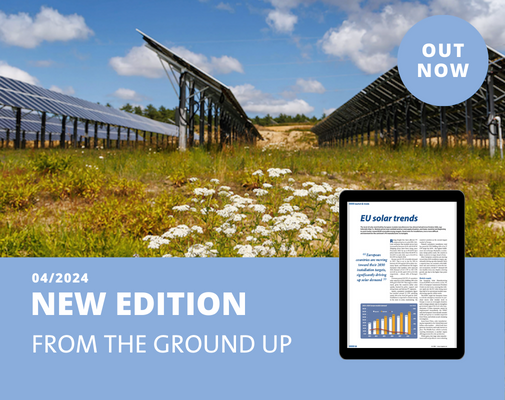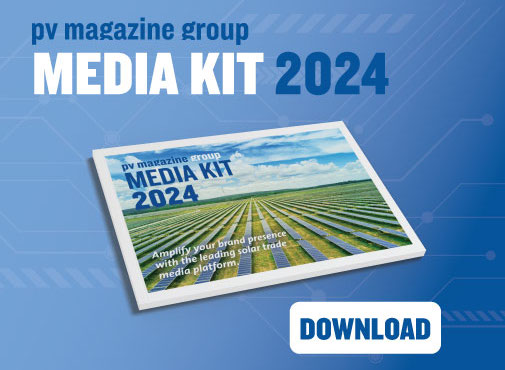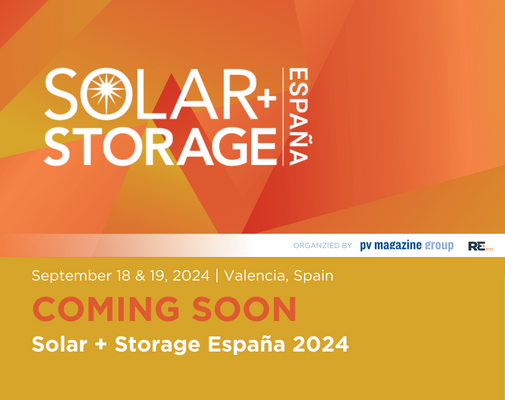Top News
IRENA’s 14th assembly underscores role of geopolitics, urgent need for action
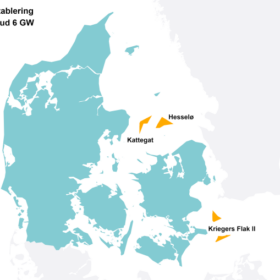
The Hydrogen Stream: Denmark may produce green hydrogen from wind
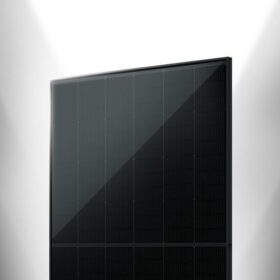
Trina Solar claims 740 W output for TOPCon PV module
pv magazine Webinar
pv magazine Webinar
MEDIA KIT 2024
Sign up for our free pv magazine newsletters

Chinese PV Industry Brief: China’s cumulative PV capacity tops 660 GW

European Parliament approves law to ban products made with forced labor
France announces new FIT rates for PV systems up to 500 kW
Low solar module prices affecting secondhand market
PV Cycle Belgium claims 404 tons of recycled solar panels in Q1
Press Releases
Sineng Unveils Extensive Portfolio of PV+ESS Solutions at WFES, Empowering MENA’s Green Transition
DAS Solar has advanced to ‘BBB’ in PV ModuleTech bankability ratings
Deye Releases New Single-Phase LV ESS: A Lightweight, Versatile, Stylish Power Solution
Hanersun Renewed Strategic Partnership with Munich Re
Opinion & Analysis
Featured
When nano- meets climate technology
Solar module prices hovering at all-time lows
As solar module prices continue to fall, pvXchange.com founder Martin Schachinger explains how price pressure could increase in the weeks and months to come.
Dust and cloud impact solar across Arabian Peninsula
In a new weekly update for pv magazine, Solcast, a DNV company, reports that dust storms and slear skies led to contrasting March Solar Performance in West Asia. The Arabian Peninsula experienced humid winds and dust storms that reduced solar irradiance to 90% of typical levels for the month.
‘Paternity leave policies are strongly correlated with the female share of board seats’
In another article of a series on gender equality, Women in Solar Europe (WiSEu) gives voice Mariyana Yaneva, Vice Chair at the Association for production, storage and trading with electricity (APSTE). She explains that policies allowing childcare needs to be met but not placing the burden of care explicitly on women, increase the chances that women can build the business acumen and professional contacts necessary to qualify for a corporate board.
Global polysilicon prices decline slightly
In a new weekly update for pv magazine, OPIS, a Dow Jones company, offers bite-sized analysis on solar PV module supply and price trends.
Making the case for concentrated solar power
Dismissed by many in the solar industry as an overly-complex, outdated technology, concentrated solar power (CSP) is set for a comeback thanks to a scaled-down, modular approach.
Markets & Policy
Featured
Maxeon sues REC, Hanwha Qcells for alleged TOPCon patent infringement
Renewables hit record levels in Australia as electricity demand rises
A new report by the Australian Energy Market Operator (AEMO) shows the nation’s clean energy transition is gathering pace with renewables, including large-scale and rooftop solar.
Winter air pollution weighing on solar generation in India
Solargis says that Indian solar operators have experienced below-average PV panel performance due to air pollution in each of the past five winters. Northern India experienced the worst air quality in decades this January, with data showing a 30% to 50% dip in solar irradiance due to high aerosol levels.
High interest rates challenge global shift to renewables
A new report from Wood Mackenzie examines how the global shift to higher interest rates to combat inflation is squeezing the energy transition.
Sinovoltaics maps out Southeast Asian PV manufacturing sites
The latest supply chain report from the Hong Kong-based technical compliance and quality assurance company covers the Southeast Asia region, providing information about 50 manufacturing sites.
Enphase Energy, Octopus Energy announce UK partnership
Enphase Energy says that Octopus Energy’s retail customers will be able to integrate solar and battery systems into their energy plans in the UK market, with the introduction of Enphase IQ8 microinverters and the IQ battery 5P platform.
Installations
Featured
South Korea plans 120 GW space solar project
Coupling heat pumps with roll-bonded photovoltac-thermal collectors
Researchers in Sweden have analyzed how roll-bonded PVT collectors can act as secondary heat sources in ground-source heat pumps and have found they provide a better performance than conventional PVT panels. Their techno-economic analysis also showed roll-bonded PVT systems can be up to 9% more expensive than conventional installations based on sheet and tube absorbers.
German startup planning vertical floating PV plant
Germany-based Sinn Power plans to build a 1.8 MW floating PV system with vertically deployed solar modules. Construction is expected to start this summer.
Large-scale solar, battery storage hybrid starts operations in South Africa
Norwegian PV developer Scatec ASA has switched on a hybrid solar and battery storage facility in the Northern Cape province of South Africa.
Photovoltaic water pumping based on open-ended winding induction
Indian scientists have designed a water-pump drive system that is powered exclusively by photovoltaics. The proposed system configuration reportedly ensures effective use of both the solar modules and the motor.
Oman’s solar transition roadmap
SolarPower Europe says in a new report on solar development in Oman that the nation will need to install a minimum of 13 GW of solar by 2030 to meet its ambitious net-zero targets.
Technology
Featured
Solar forecasting based on all sky imaging, long short-term memory
Researchers design tin-germanium-based perovskite solar cell with potential efficiency of 31.49%
Researchers in Malaysia have simulated a mixed cation perovskite solar cell integrating tin and germanium in the absorber. By modulating the perovksite layer thickness, they were able to achieve an efficiency ranging from 24.25 % to 31.49 %
Agrivoltaics for fir trees
German researchers are studying using an overhead solar PV system, designed to be removable and reusable, as a sunshade for young fir trees. The pilot, located at a quartz sand excavation site, will be monitored to compare growth and water consumption with an adjacent unshaded tree plot.
Neighbors like solar, to a point
Research indicates that most neighbors of solar power facilities in the United States maintain positive attitudes toward these plants until they exceed 100 MW in capacity, or approximately 400 acres.
Johnson Controls releases new residential heat pump series
The new heat pumps use R-454B as a refrigerant and are specifically designed to be matched with Johnson Controls’ residential gas furnaces. Their size ranges from 1.5 tons to 5 tons and their coefficient of performance (COP) spans between 3.24 and 3.40, according to the manufacturer.
Attica-Crete leg of Mediterranean super grid due mid 2025
Greece has grand plans for an interconnector network that runs from the Middle East through to the heart of Europe. pv magazine examines the latest developments on the road to a Mediterranean super grid and what it might mean for the regions involved.
Manufacturing
Featured
Vsun starts production at wafer facility in Vietnam
Premier Energies aims to raise over $180 million in IPO
Premier Energies has filed draft papers with the Securities and Exchange Board of India (SEBI) for an initial public offering (IPO). The company says it will partly use the proceeds to fund 4 GW of tunnel oxide passivated contact (TOPCon) solar cell and module production.
PV industry demand for silver could rise by 20% this year
Demand for silver in the photovoltaic industry hit 193.5 million ounces in 2023, according to the Silver Institute. It predicts that demand will grow by another 20% in 2024.
China PV Industry Brief: Beijian Energy to build HJT cell, module factory
Beijian Energy says it will build a new factory to make heterojunction (HJT) solar cells and panels. The facility in Liaoning province will produce 4 GW of cells and 3 GW of PV modules.
Global PV capacity hit 1.6 TW in 2023, says IEA-PVPS
The International Energy Agency (IEA) Photovoltaic Power Systems Programme (PVPS) has published a wide-reaching snapshot of the global PV market, covering installations, manufacturing, policy trends, and grid integration.
German startup offers modular PV system for parking lots
UV Energy has developed a PV system that can be used in parking lots and on other surfaces. It claims that the arrays can be deployed within time frames of three to six weeks.
Energy Storage
Featured
The Hydrogen Stream: Linde plans 5 MW electrolyzer in Brazil
Europe’s largest battery storage project secures approval
Netherlands-based developer Giga Storage has obtained the irrevocable permit for the construction of a 600 MW/2,400 MWh battery energy storage system (BESS) project in Belgium.
Netherlands allocates €100 million for battery storage subsidies
The Dutch government has earmarked €100 million ($106.7 million) of subsidies for the deployment of battery storage alongside PV projects. The funds are part of a €416 million subsidy program announced last year to alleviate grid congestion.
Europe’s negative price trend could continue until summer
AleaSoft and SolarPower Europe inform pv magazine that negative energy prices in Europe are related to the pandemic, low demand, insufficient storage solutions, and inadequate energy planning. They say this situation will likely continue into the summer.
ArcActive targets Australia with ‘re-engineered’ lead-acid battery tech
ArcActive, a New Zealand-based battery tech specialist, plans to set up a factory in Australia within 18 months. It says the facility will be able to produce 30,000 lead acid-based residential energy storage systems per year.
JLR, Allye Energy partner on 270 kWh portable battery energy storage system
Jaguar Land Rover (JLR) and Allye Energy have agreed to collaborate on a 270 kWh portable battery energy storage system (BESS) built with second-life Range Rover batteries. The system, which is set to become the first commercially available BESS with JLR battery packs, can fully charge up to nine Range Rover PHEV vehicles at once.
